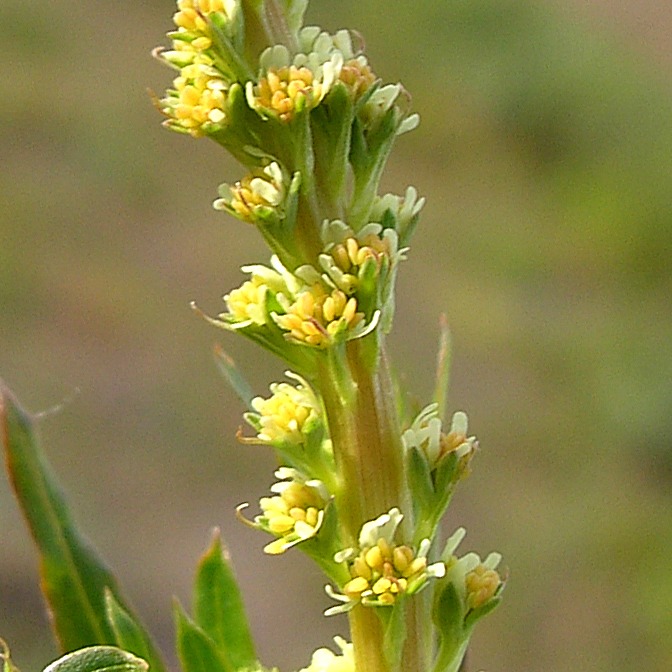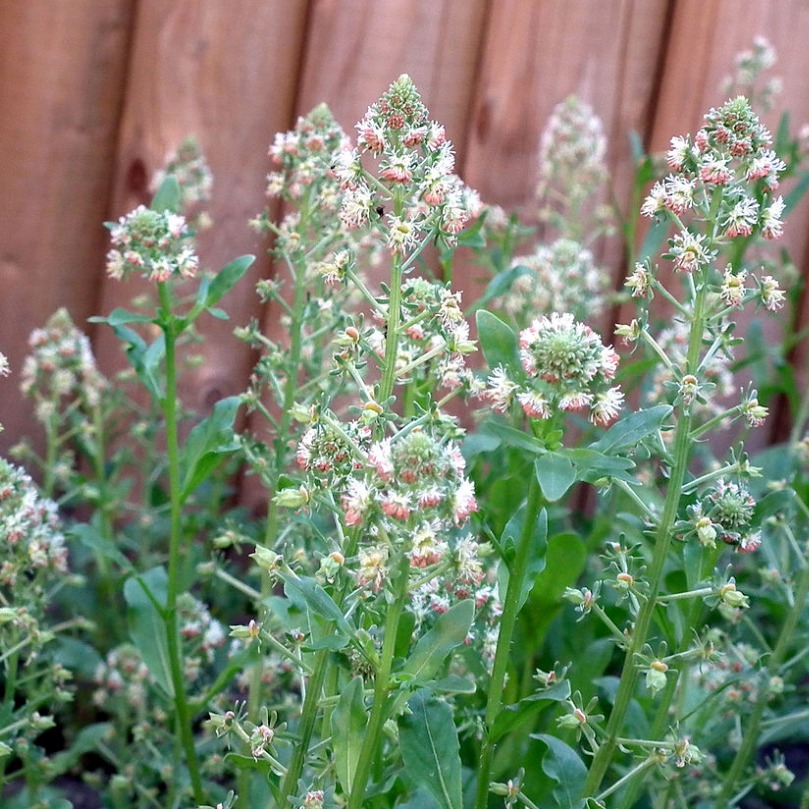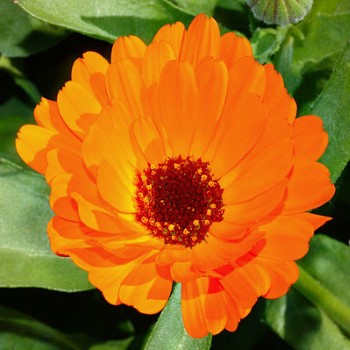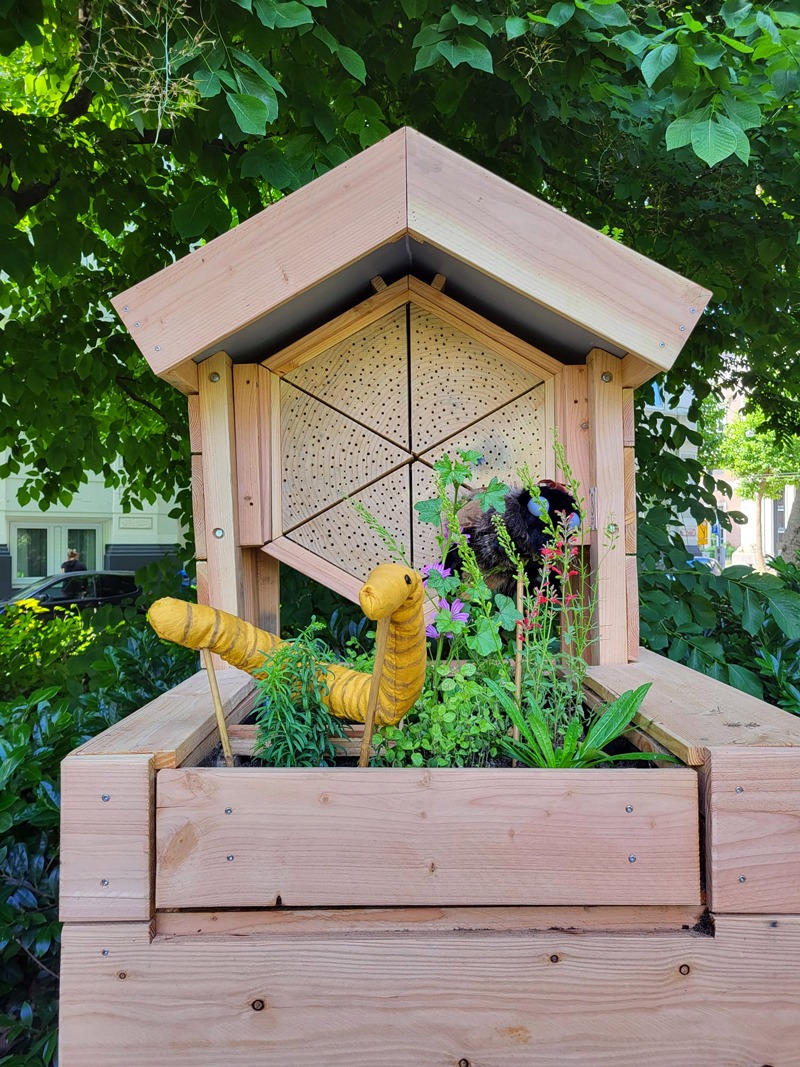Mignonette Yellow-face Bee
Hylaeus signatus
Appearance
A small, slender bee with a shiny black body. Males display distinctive white or yellow face markings that resemble a ‘mask.’ Unlike many bees, this species has very little body hair, which can lead to confusion with wasps or flies.
Special traits
The Mignonette Yellow-face Bee flies from the end of May until August and nests in existing cavities such as hollow plant stems for example from bramble and rose, old nesting tunnels of other insects and crevices in walls making use of what is available as shelter or breeding site.
Interesting facts
The Mignonette Yellow-face Bee is highly dependent on specific plant species. As an oligolectic species, it serves as an indicator for calcareous, flower-rich environments. The preservation and restoration of such habitats are crucial for the survival of this bee.
Physical location of the BeeTotem
Plantage Westermanplantsoen, opposite the main entrance of Artis Zoo, in central Amsterdam, NL. Coordinats 52 ° 21 ‘ 56.2134 N 4 ° 54 ‘ 45.5688 E
Beetotem en Beehotel
Hortus BeeTotem & BeeHotel for the Mignonette Yellow-face Bee
The name ‘the Hortus BeeTotem’ embodies a vital new alliance — where botanical gardens reach beyond their traditional borders and sow life into the urban fabric. By creating refuges for wild bees and their plants together with neighbourhood residents, they inspire communities to become stewards of biodiversity — before it vanishes irreversibly.
The Mignonette Yellow-face Bee is also a RefuBee and depends on both food and shelter. The BeeTotem and BeeHotel are therefore specifically designed for this bee. For the Reseda Masked Bee, this means an above-ground BeeHotel with holes 10 cm deep and 3–5 mm in diameter, completely waterproof, and oriented toward the morning sun in spring. Made entirely from recycled materials, it is also remarkably sustainable.
Although tiger worms typically produce rich, fertile soil, Reseda thrives in nutrient-poor, calcareous soils. This contrast creates a tension within the BeeTotem. Still, the worms indirectly contribute to the quality of pollen and nectar, as their compost stimulates microbial life at the soil level and may enhance the scent of flowers. This results in a subtle synergy between scarcity and abundance — a collaboration in service of biodiversity.
The Mignonette Yellow-face Bee is highly dependent on specific plants for food. It is essential that these plants are grown around the BeeTotem to support the bee. Equally important is that host families and their neighbours grow these plants in their backyards or on balconies. In this way, a local network — the clan of the Large Yellow-face Bee, begins to take shape, with people actively helping to prevent the extinction of this species.
In urban environments where humans often strive for order and tidiness, it is important to realise that nature can thrive when we leave parts of it untouched and allow for some wildness. This requires a shift in mindset — and practical adjustments. The plants needed by the Large Yellow-face Bee grow best in dry, calcareous, and nutrient-poor soil. This can be achieved simply by mixing crushed seashells, eggshells, or limestone into the soil where they are planted.
Plants for the Mignonette Yellow-face Bee

Wild mignonette
| Latin | Reseda lutea |
| Environment | Full sun |
| Size | 30–100 cm |
| Bloom | June – September |
| Lifespan | Biennial |
| Soil | Dry, calcareous, low-nutrient |

Dyer’s weld
| Latin | Reseda luteola |
| Environment | Full sun |
| Size | 50–120 cm |
| Bloom | June – August |
| Lifespan | Biennial |
| Soil | Dry, calcareous, low-nutrient |

Garden mignonette
| Latin | Reseda odorata |
| Environment | Full sun |
| Size | 30–60 cm |
| Bloom | June – September |
| Lifespan | Annual |
| Soil | Well-drained, chalky |

White mignonette
| Latin | Reseda alba |
| Environment | Full sun |
| Size | 40–100 cm |
| Bloom | July-Oktober |
| Lifespan | Annual |
| Soil | Rocky, dry, calcareous |

Wild marjoram
| Latin | Origanum vulgare |
| Environment | Full sun |
| Size | 30–60 cm |
| Bloom | June – September |
| Lifespan | Perennial |
| Soil | Dry to moderately moist calcareous soil |

Wild Carrot
| Latin | Daucus carota |
| Environment | Sun |
| Size | 30–100 cm |
| Bloom | June – September |
| Lifespan | Perennial |
| Soil | Dry to moderately moist calcareous soil |
KARMAGOTCHI
STATUS
The principles behind the Karmagotchi are derived from Tamagotchi, a tool that allows hosts to easily keep track of the current condition of plants and worms in the BeeTotem. A continuous script linked to the local weather station retrieves data on temperature and precipitation and regulates the pace from 100 to 0%.
Hosts have access to this interface and after adding water or kitchen scrapings they can update all other hosts by simply clicking on the water or feed icon.

STATUS

Information
About the Mignonette Yellow-face BeeTotem

QR code
This QR code is printed on the informational pavement tile at this BeeTotem and on the info sign at the associated BeeHotel. People who scan this code with their phones are directed to this webpage for more information. At the same time, people are encouraged to spot bees, photograph them and upload these photos to this page. Everyone who participates in this supports a direct evaluation process.

Plants te koop
We share the dream of a number of organic growers to create more biodiversity with growing flowering native crops for animals and humans. Please note that plant availability may vary depending on season and supplier. Wild bees have different flight times, usually depending on when the flowers they visit are in bloom. You can order plants and seeds, and they will be delivered to your home by regular post. Below are suppliers of plants and plant seeds.

Adopteer een wilde bij
Adopt a RefuBee – and treat her to her favourite flowers. We have divided Amsterdam into 104 different zones, as many as there are wild bees. You can easily look up which ones you can adopt in your neighbourhood based on the flowers you can order. Click on the link below, enter your postal code and the flower selection will appear.

Address:
Amsterdam
Email us :
info@blindpainters.org
Call ons:
+31 6 553 563 43
Bee social
Information
Privacy






